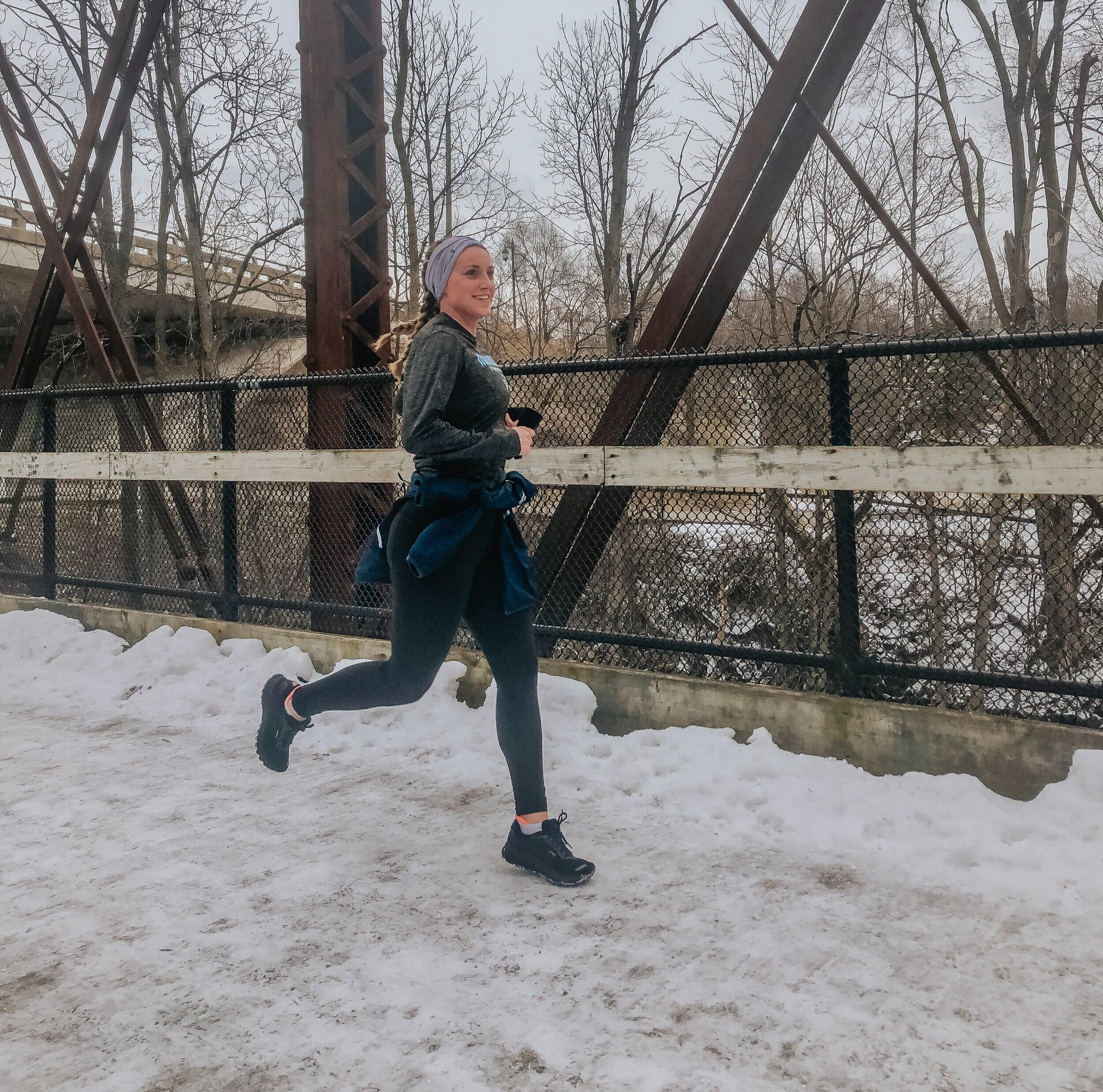Best Tips for Running on Ice and Snow
As a college runner, there were no days off, so I learned quickly how to love running on the ice and snow. Sometimes, there were days that were a little scary to run outside. Take the polar vortex we had in 2019. The meteorologists told everyone to stay inside, but we didn’t have enough treadmills, so outside we went. I had on two pairs of pants, two long sleeve shirts, a ¾ zip, two pairs of socks, my winter (non-running) jacket, and a scarf wrapped around my face. In the end, I actually got hot and had to take off my jacket, even though the real feel temperature was -20.
I was terrified for my first winter running at Northwood. I was so scared to fall and hurt myself, but my teammates helped me learn to love it. I have ran through the past 7 winters and have not fallen down (knock on wood).
winter running tips
1. Plan your route on plowed/salted sidewalks
In college, we did our winter workouts on the Pere Marquette Rail Trail because we knew it was plowed/salted. Winter running is a lot of running the same routes that you know will be cleared off and it can get boring, but it will keep you safe. If you can’t, then run on plowed roads.
2. Run on the correct side of the road and wear reflective/light up gear when running in the morning and at night
If you end up on the roads, be sure to run on the correct side of the road (facing traffic, so that you can see oncoming vehicles) and wear the appropriate gear. A lot of winter running, for full-time employees in the traditional 9-5 work setting, will be done in the dark or as the sun is rising or setting. Be sure to wear reflective gear and/or light up gear when running in the dark. Always assume the car doesn’t see you.
3. When approaching ice, run with short choppy steps and try to land flat footed
This is a little trick I’ve learned over the years. Running with short, choppy steps, keeps your core centered and your legs under you. I’ve noticed the times my teammates fell were because they were stretching their legs too far. After trying the short, choppy, flat footed, steps, we had less falls.
4. Stretch your calves!!
Running through the snow can put a toll on your calves. If you’ve ever ran on the beach, in loose sand, you know what I’m talking about. Make sure you warm up before every run and stretch your calves after your runs. Stretch, roll, repeat! (Compression sleeves are my best friend in the winter.)
5. Don’t be afraid to slow down
Snow and ice can slow you down, so don’t be afraid to give in and slow your pace. Winter conditions can throw off a run or a workout, so keep this in mind when analyzing your paces.
6. When in doubt, run in the snow
If you are nervous about black ice, it’s better to run on the packed snow, than it is run on the wet sidewalk or road. Once you become a seasoned winter runner, you will be able to tell if the ground is wet or ice.
7. If all else fails, choose the treadmill
I really despise the treadmill and will choose running outside any day of the week no matter the weather. But, I understand that running outside can be scary and tough at times, so choosing the treadmill is always a win!


